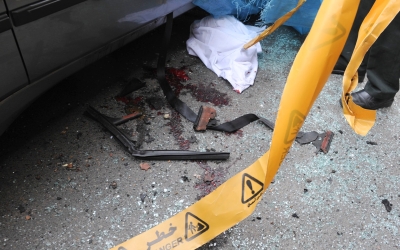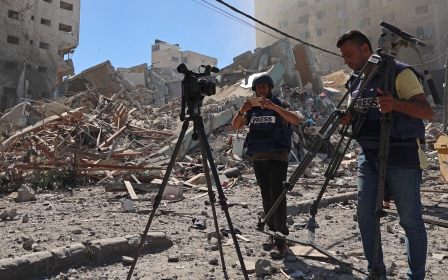Gaza war: Hamas reveals new capability as it reduces Israel's military edge

As an uneasy ceasefire hangs over Gaza and Israel, differing accounts have emerged as to who "won" the round of violence in May.
Much of Gaza once again lies in ruins with Israeli air strikes killing 253 Palestinians, including 66 children, and wounding more than 1,900, according to the health ministry in Gaza. Hamas rockets also killed 13 Israelis.
However, a consensus is emerging in the Israeli media - and among politicians and military command - that Hamas effectively defeated Israel.
Military officials have concluded that, from a strategic point of view, Hamas achieved its goal of establishing itself as a player that cannot be ignored when it comes to Jerusalem and al-Aqsa Mosque. Israel's “mowing the lawn” doctrine of repeated strikes on the Gaza Strip in order to prevent Palestinian resistance movements from accumulating military power, has largely failed.
A principal reason for this is the narrowing of the military imbalance that has long existed between the de facto rulers of Gaza and the Israeli army.
The new military capabilities of Hamas - long-range and more accurate rockets, drones and an unmanned submarine - have taken the Israeli military by surprise.
Imad Alsoos, research fellow at the Max Planck Institute for Social Anthropology, told Middle East Eye that he estimated that the Hamas leadership also created a distribution of labour in resisting the Israeli assault. The group provided low-range mortars to the left-wing Popular Front for the Liberation of Palestine (PFLP), while they focused on operating long-range weapons instead.
The absence of Israeli tanks - apparently largely withdrawn after an Israeli soldier was killed on May 12 by an anti-tank missile - also allowed mortar operators to approach the Gaza border fence and bring the mortars within range of the Israeli communities around the besieged enclave.
According to Haaretz, in those communities, over 3,400 residents requested psychological treatment as a result of trauma during the 11 days of the fighting, compared with 2,200 requests received in the region during the 51 days of fighting in 2014.
“In the 2014 war the border area was the deadliest for the IDF (Israeli Defence Forces): the use of mortars and anti-tank weapons on mustering troops, the tunnel attacks on border posts, and frogmen attacks from sea all loomed large in this round of fighting," said Canadian journalist and researcher John Elmer.
"The IDF quite apparently wanted no part of that area this time."
Stock falls in arms companies
Pieter Wezeman, senior researcher at the Stockholm International Peace Research Institute (SIPRI), told Middle East Eye that the Israeli military relies on arms supplied by the US, followed by Germany and Italy.
Wezeman mentioned that Germany provided Israel with submarines, frigates, torpedoes and engines for Merkava tanks – all are weapons which did not play a visible role in the recent attack. The aerial bombardments, however, were achieved by using US-made planes by pilots trained with Italy-supplied trainer aircraft.
When it comes to Israeli-made weapons, however, the defence companies were relatively silent during the last round of bombardments of Gaza. The websites of the three largest companies, Elbit Systems, IAI and Rafael did not upload any comments on the recent conflict.
'In the recent conflict between Gaza and Israel, it seems that Hamas improved its weaponry with more accurate, long-range missiles'
- Antony Loewenstein, journalist
The most visible system deployed by the Israeli military was Iron Dome, which is heavily subsidised by the US but still costs hundreds of thousands of dollars per interception.
As a result of the fact that the Iron Dome system erroneously shot down a drone produced by Elbit Systems, Elbit weapons were revealed to have been used in the bombardment of Gaza, with activists in the UK barricading themselves on top of the roof of an Elbit Systems factory to protest the use of its weapons against civilians in the strip.
Antony Loewenstein, an independent journalist who was recently based in Jerusalem and is writing a book on how Israel's occupation has gone global, pointed out that Palestine is often a testing ground for new Israeli weapons and defence equipment.
"In the recent conflict between Gaza and Israel, it seems that Hamas improved its weaponry with more accurate, long-range missiles. However, historically, many of Israel's most sophisticated surveillance technology and weapons were first developed for use against Palestinians in the West Bank, Gaza and Israeli itself," he told MEE.
"Israeli companies still talk about 'battle-tested' weapons for global sale. Many of the key 'innovators' in this space work for Israel's notorious cyber Unit 8200 and take this experience into the private sector, leading to techniques perfected in Palestine used and abused in global conflicts."
However, Elbit Systems, the only privately owned company in Israel’s top three, saw its stock price mostly go down during the recent round of fighting - as opposed to in previous rounds, in which it went up.
The gap in military power between the Israeli military, considered to be the 14th strongest military in the world, and the Palestinian armed resistance groups, which amount to poorly equipped militias, remains very real, but the recent fighting shows that it is gradually narrowing.
This article is available in French on Middle East Eye French edition.
Middle East Eye delivers independent and unrivalled coverage and analysis of the Middle East, North Africa and beyond. To learn more about republishing this content and the associated fees, please fill out this form. More about MEE can be found here.





